Using biomarker evidence (for example, the Early Holocene presence of sea creatures unable to survive below fixed warmth thresholds) and glacier melt extent measurements (for example, sea shells buried 6 km inside a glacier), scientists have been colloborating on a growing consensus that much of Arctic Svalbard was about 7°C warmer than today during the Early Holocene, when CO2 concentrations lingered near 260 ppm.
1. Farnsworth et al., 2020: “peak Holocene temperatures reaching 7 °C warmer than today, c. 10 ka BP” … “shells sampled from within a thrusted debris band located 6 km inside the modern ice margin of a major outlet glacier date to 10.3 ±0.49 ka BP”
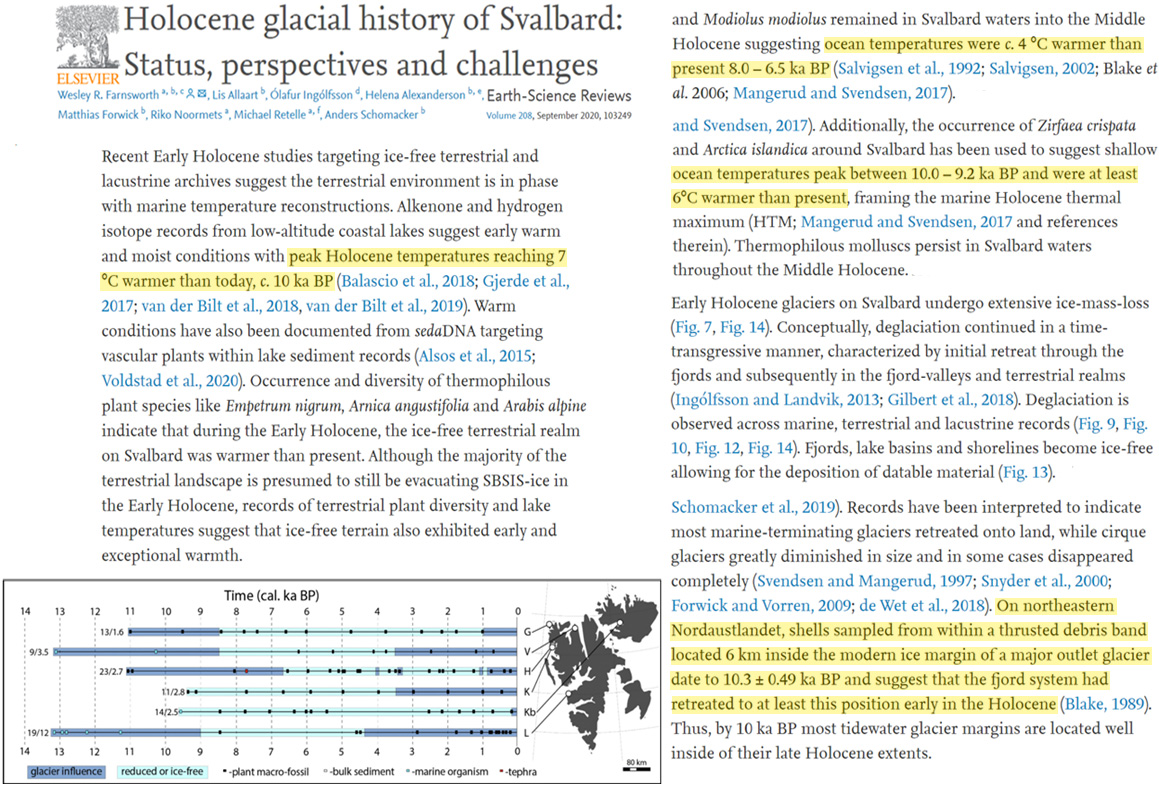
Image Source: Farnsworth et al., 2020
2. Leopold et al., 2019: “the summer SSTs today around Svalbard are some 5-8°C lower than during the thermal peak of the Early Holocene”
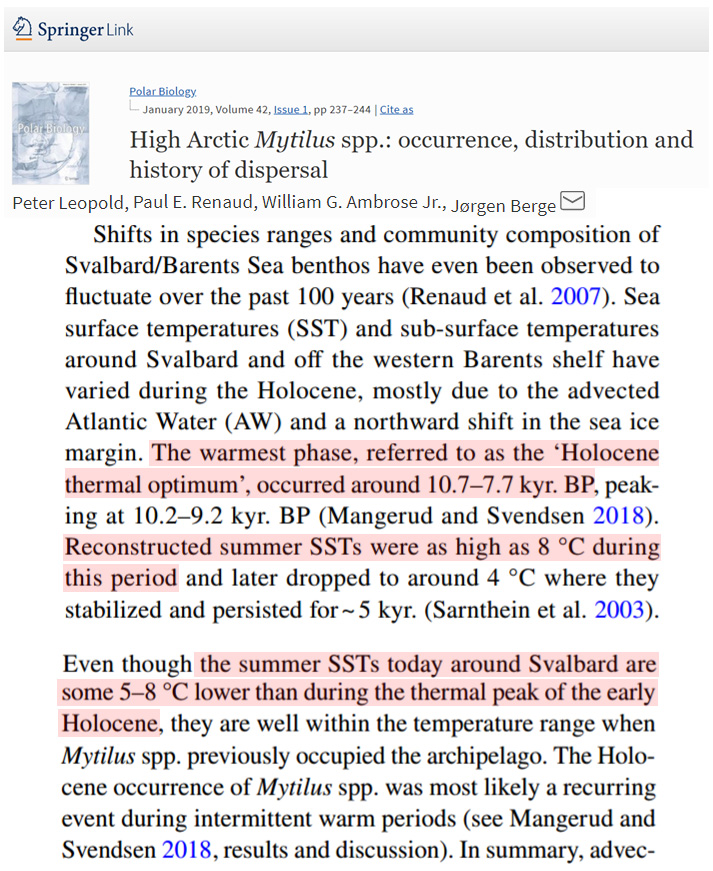
Image Source: Leopold et al., 2019
3. van der Bilt et al., 2019: “Warmth was greatest around 10 ka BP, when temperatures were up to ~7 °C higher than present in response to high radiative forcing”
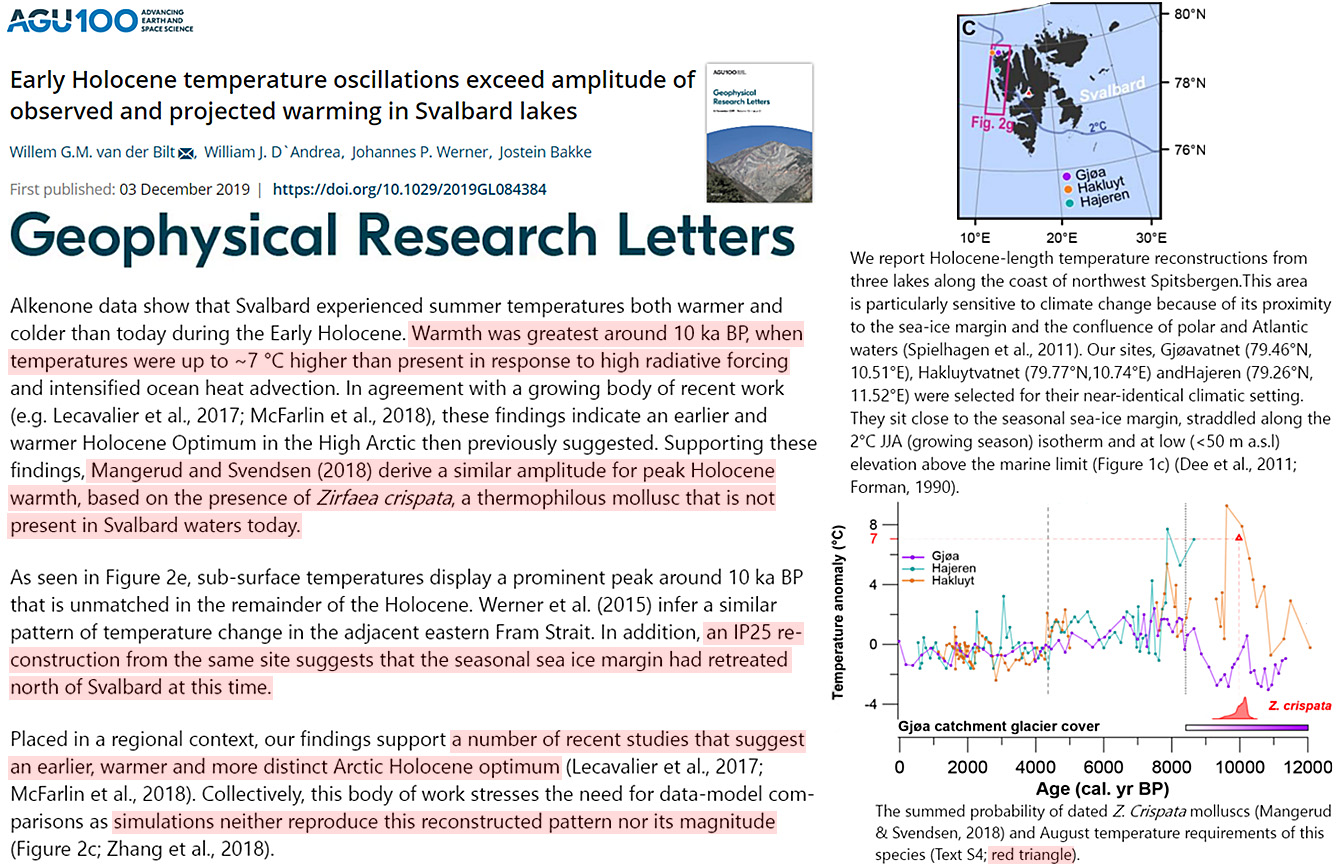
Image Source: van der Bilt et al., 2019
4. Łacka et al., 2019: “At approximately 6400 cal yr BP, the SST in Storfjordrenna reached a peak of almost 13 °C” (about 10°C warmer than the 2015 measured temperatures of about 2-4°C) … “after 10,000 cal yr BP, the glaciers in western Svalbard were even smaller than those of the present day” … “Sea ice-free conditions remained during most of the mid-Holocene”
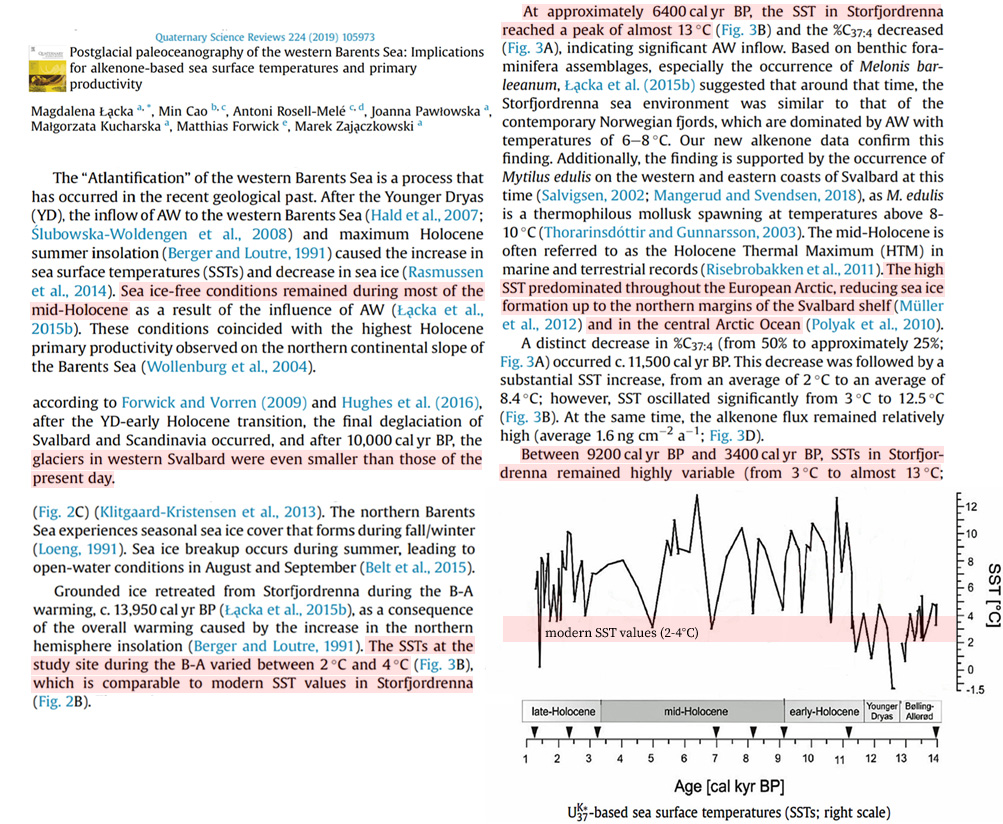
Image Source: Łacka et al., 2019
5. Beierlein et al., 2015: “the maximum BWT [bottom water temperature] amounts to 15.2°C, which is 8-10°C higher than maximum summer BWTs in this region”
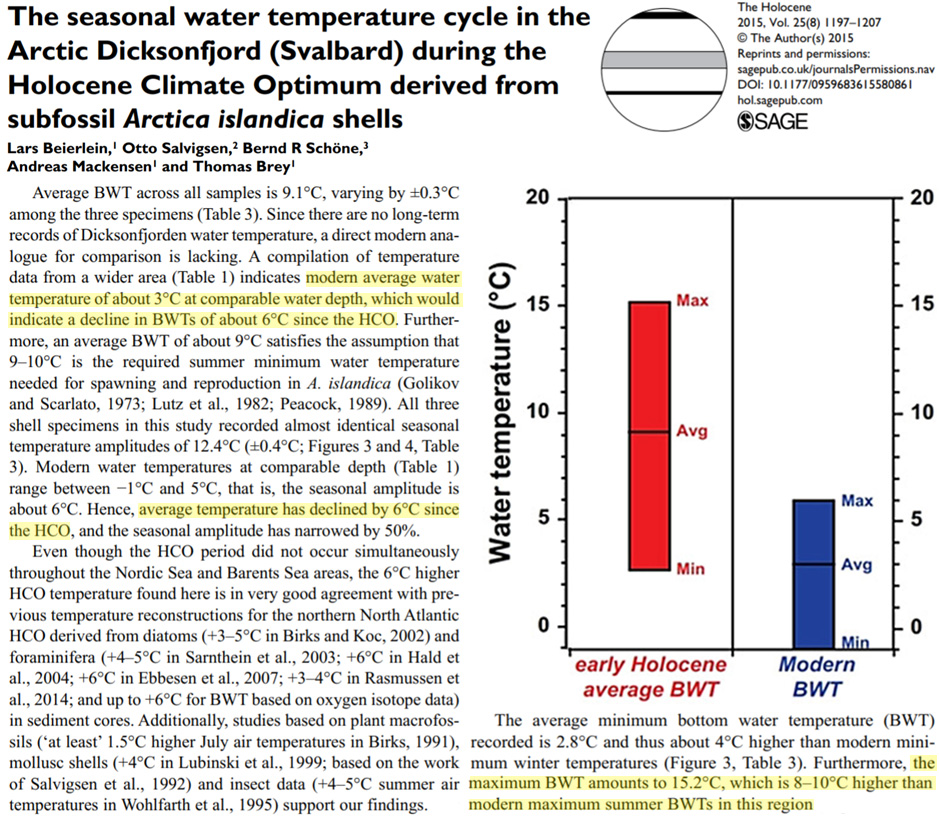
Image Source: Beierlein et al., 2015
via NoTricksZone
July 27, 2020 at 11:48AM
